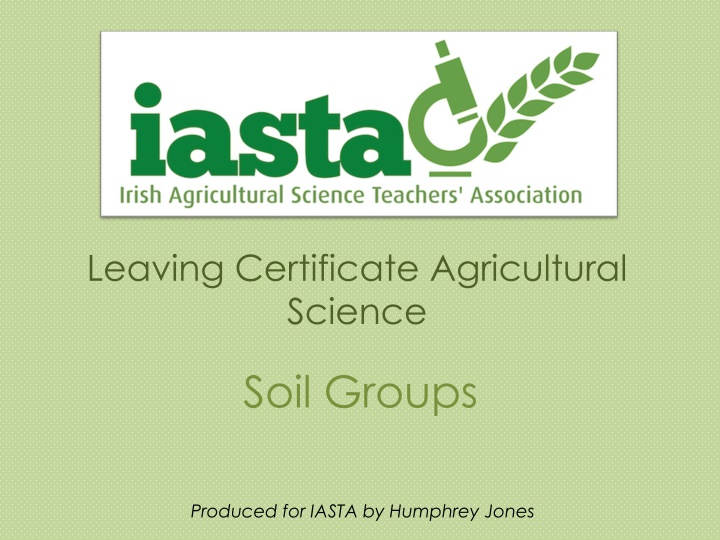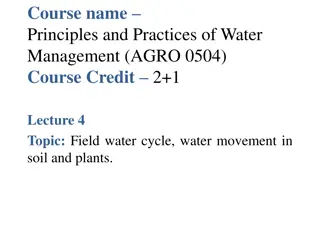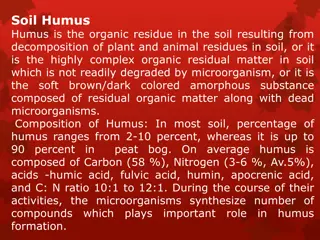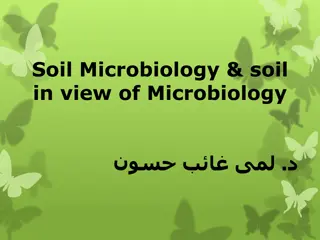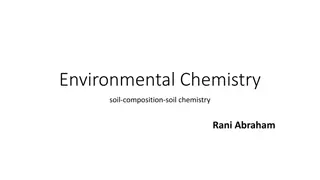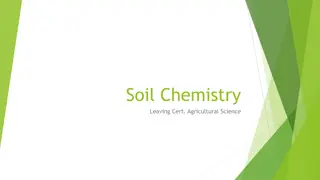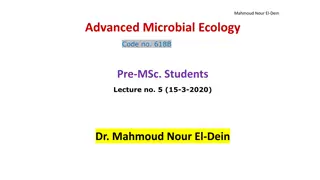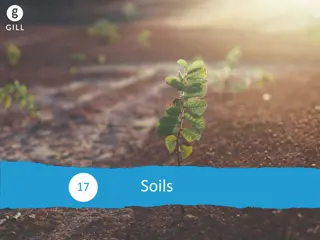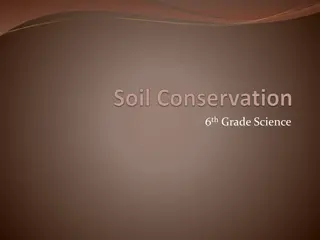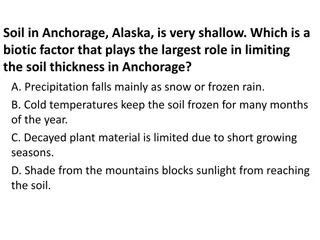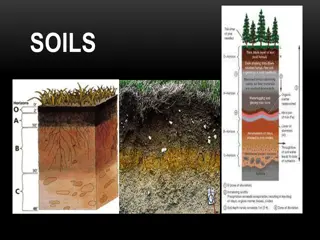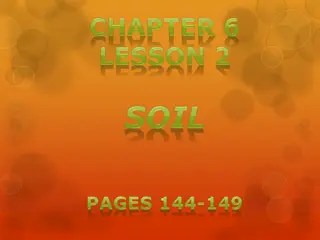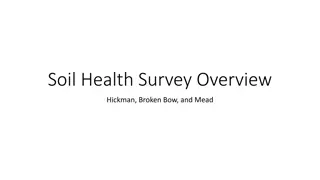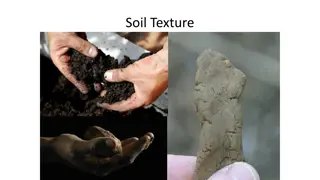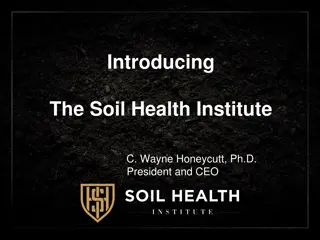Overview of Soil Groups in Agricultural Science
The Leaving Certificate Agricultural Science delves into various soil groups in Ireland, including Podzols, Brown Earths, and more. The classification of soils helps determine their best use in different areas, showcasing their characteristics and potential productivity. The study highlights the importance of understanding soil composition for effective agricultural practices and land management.
Download Presentation

Please find below an Image/Link to download the presentation.
The content on the website is provided AS IS for your information and personal use only. It may not be sold, licensed, or shared on other websites without obtaining consent from the author.If you encounter any issues during the download, it is possible that the publisher has removed the file from their server.
You are allowed to download the files provided on this website for personal or commercial use, subject to the condition that they are used lawfully. All files are the property of their respective owners.
The content on the website is provided AS IS for your information and personal use only. It may not be sold, licensed, or shared on other websites without obtaining consent from the author.
E N D
Presentation Transcript
Leaving Certificate Agricultural Science Soil Groups Produced for IASTA by Humphrey Jones
Introduction In the 1960 s An For s Taluntas began the National Soil Survey, and it is still continuing to this day. The research team are based in Johnstown castle in Co. Wexford & it was started to identify soils with similarities in their horizons throughout the country. The main aim was to then eventually classify all the soils in Ireland into the Great Soil groups and Series.
Introduction 2 This would then be used to determine the best possible use for the types of soil in a particular area. This was first published in 1969, with a second edition in 1980. These show the distribution of the major soil groups throughout Ireland (and each county also) as well as a discussion on their land use potential.
The Main Soil Groups The following 10 soils groups are found in ireland: The Podzols Brown Podzolics Grey brown Podzolics Brown Earths Gleys Rendzinas Lithosols Blanket peats Basin Peats Regosols
Brown Earths These soils are mature, well drained mineral soils. They have not suffered from serious cases of leaching (loss of minerals) They have a uniform profile (i.e. No distinct horizons or layers) The Brown Earths in Ireland are mainly found in areas where the underlying rock is acidic, and therefore the soil is acidic. With regular liming and fertilising the soils can be quite a productive soil.
Podzols These soils are typical of areas where the parent rock is acidic (like granite) and the annual rainfall is quite high (> 1000 mm) and a moderate, cool climate. These soils show serious cases of leaching of both mineral and humus. These materials are translocated into the B Horizon. This process is caused PODZOLISATION.
Podzols 2 When serious cases occur and large amounts of iron oxide (rust) have been leached from the A horizon into the B horizon, an iron pan may form when these cement together. This in turn causes major problems for drainage and root penetration. If water logging or flooding occur, then little or no oxygen will be available and organic matter will eventually form an O Horizon. This is the first stage of a formation of a peat and the soil is now known as a Peaty Podzol.
Podzols 3 When the O Horizon becomes deeper than 30 cm, then the soil is no longer podzol, but is now a blanket peat. Podzols are not very useful as tillage soils, or for grazing. This is due to their poor drainage and poor root penetration. In cases where Iron Pans have not formed, Podzols may be useful for Forestry. Podzols must be managed carefully or they may very quickly become unsuitable again.
Brown Podzolics Brown Podzolics are similar in structure to the Podzols, but have not been exposed to serious leaching. They have a well developed A1 horizon, a weakly developed A2 and accumulation of iron, aluminium and humus in the reddish brown B2 horizon. They can be used for pasture and arable crops as long as they are fertilised and limed regularly.
Grey Brown Podzolics Grey Brown podzolics are very similar in appearance to Brown Earths. They have a uniform profile, with no real differences between horizons. However, they are usually formed on limestone parent material. They have a high pH and acid leaching does not occur. Some clay particles are leached to the B2 horizon. Grey Brown Podzolics are excellent soils with a wide range of use.
Gleys Gleys occupy over 25% of the island of Ireland. Ground Water Gleys are water logged soils in areas of topographical depressions. Surface Water Gleys are formed over impervious layers of rock. Gleys have limited use in agricultural (low intensity grazing only) except where successful draining has occurred. Gleys have a A and B horizon only.
Blanket Peats Blanket Peat soils have a single A horizon ranging from 1 to 2 metres deep. They are black / brown in colour. They have poor drainage, low pH and are found in areas of high rainfall. A typical blanket peat soil has approx 90% water. Blanket peats are used for forestry or harvested for fuel.
Basin Peats Basin peats are similar to blanket peats but are deeper, ranging from 3 to 10 metres. They consist of a single O Horizon, with the level of organic matter degradation increasing with depth. They are found in various areas all over Ireland. They can be harvested for fuel or drained, limed and fertilised to use for intensive farm practices including grass.
